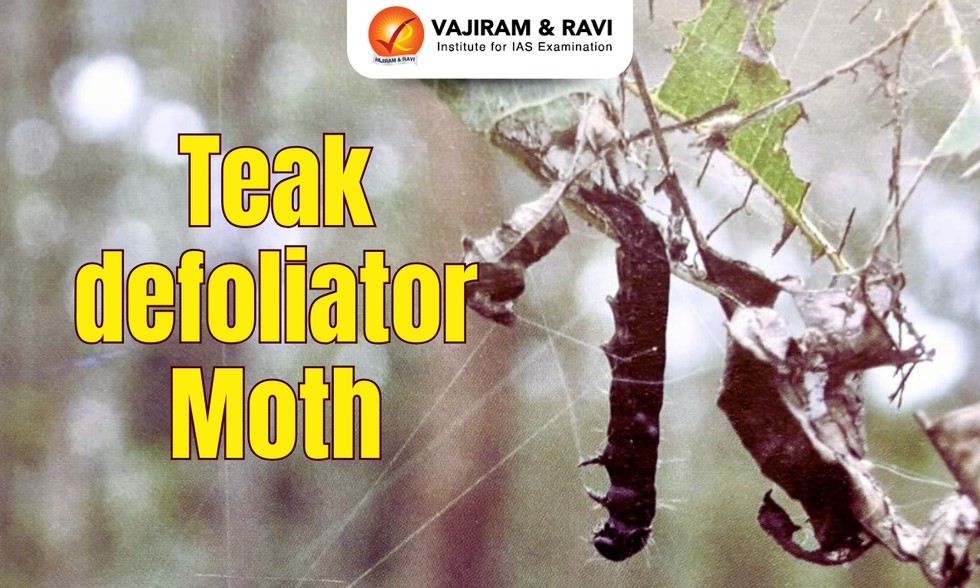About Teak defoliator Moth:
- It is a moth and cryptic species and a well-known pest which affects teak tree.
- It also attacks an alternative host plant, Avicennia marina, a prominent mangrove tree species abundant along the west coast of India, causing severe and extensive defoliation of Mangroves.
- How does it affect Teak Tree?
- Larvae cause damage and attack commences with onset of monsoon rain.
- When the larvae attack, the tree spends its energy regenerating leaves instead of growing.
- Nature of damage: These moths defoliate trees and eat entire leaves and leave midrib.
- Distribution: It is native to South Asia and South-east Asia and mainly occurs in forests across southern Asia from India, Sri Lanka and Bangladesh, through Thailand and the rest of south-east Asia to New Guinea, and north Queensland in Australia.
- The teak defoliator Hyblaea puera was first recognized as a pest of teak in 1898 in the Konni Forest Division in Kerala State of India.
- The outbreaks of this pest are a regular annual phenomenon in teak plantations.
- Impact: It causes significant economic losses on timber production from teak plantations during their seasonal outbreaks.
What is Hyblaea puera Nucleopolyhedrosis Virus?
- It is a potential biocontrol agent of the teak defoliator Hyblaea puera.
- It is considered to be the most promising biocontrol agent of this pest according to laboratory and field studies.
- It causes lethal infection in the pest larvae and prevents widespread defoliation of teak trees.
- It multiplies at least a trillion times inside a single larva. When the body breaks open, it releases huge quantities of inoculum.
- Even if the infection is sub-lethal, the virus stays in the insect, gets passed on to the next generation, and proves lethal then.
